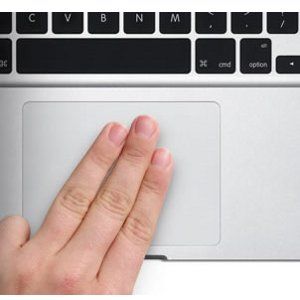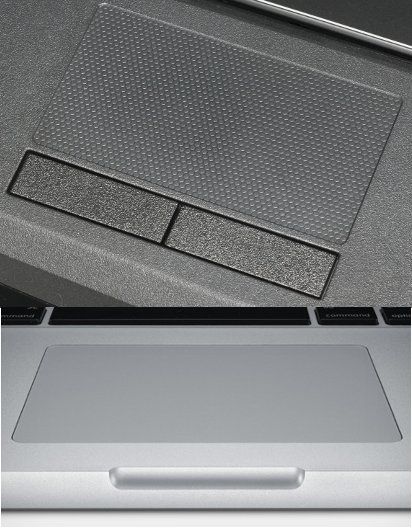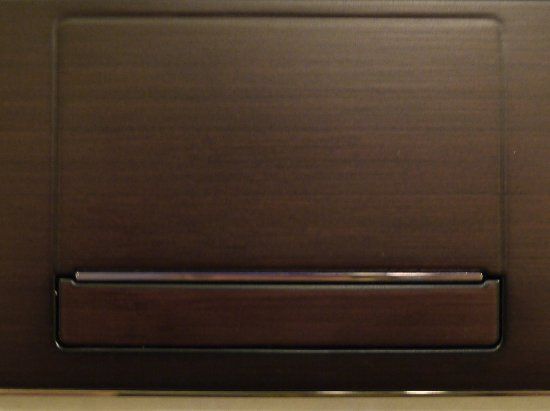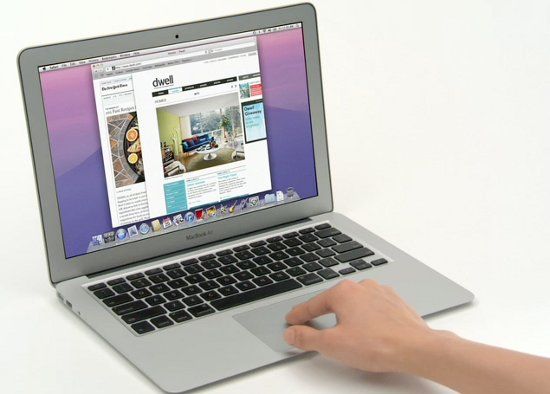If you walk into a retail store and ask a sales rep to explain a laptop to you, chances are you’ll receive a long list of hardware information focusing on what’s inside. You’ll be told what the processor is, you’ll be told the size of the hard drive, and you’ll be told the RAM installed.
This is information you’ll want to know, but in today’s world of speedy processors and cheap RAM, many users will rarely ask about all their laptop has to give. As a result, the difference between a good laptop and a great one comes down to the little things, like the touchpad. Yet the touchpad itself is a mysterious item. It’s there, it works, and it has for years. Not all touchpads are built the same however.
The Basics Of Touchpad Technology
The first touchpads made their debut in the early 1990s, and were one of several responses to the problem of providing an portable input solution with a portable computer (trackpointers and trackballs were also common). The first laptop to have a touchpad –or trackpad, as it was officially called at the time – was the Apple PowerBook 500.
Modern touchpads use a technology called capacitive touch. This is the same tech used by most modern touchscreens, and it works by detecting the electrical current of a human finger as it comes into contact with the touchpad surface. This allows for smooth, easy navigation that doesn’t rely on physical pressure.
However, capacitive touch does have one minor disadvantage, and that’s the inability to detect inanimate objects or gloved human hands. Special touchpads, like the tablets from Wacom, are required for use with a stylus. Fortunately, only artists and Eskimos routinely bump into this problem.
The Differences Between Touchpads
While virtually all touchpads use the same basic technology to detect input, there are a wide variety of ways to use this technology, and a wide variety of touchpad sizes and textures.
The most important feature to look for in a touchpad is multitouch gesture support. Although this has become a common extra, it’s not ubiquitous. For example, I recently tested a MSI GT680R gaming laptop, priced at about $1,500, which did not have multitouch. Determining if a laptop supports this feature is easy if you can use it hands-on. Just try scrolling down a webpage with your middle and index fingers.
If a laptop doesn’t have multi-touch, it should at least have scroll space available. This is a small vertical area, usually on the right side of the touchpad, that’s exclusively designed to translate finger movement into an up/down scrolling motion.
Material quality, although low-tech, is critical. Most inexpensive laptops will simply construct the touchpad out of the same plastic as the surrounding laptop, and that works alright, but it doesn’t result in the smoothest feel. More expensive laptops, like the MacBooks, use a glass surface because it provides less resistance to finger movement. You’ll occasionally find other materials used, as well. The ASUS Bamboo series, for example, crafts the touchpad out of the same bamboo you’ll find on the rest of the laptop.
Finally, the touchpad buttons are important. The best option is a touchpad that offers two separate physical mouse buttons, but many touchpads use what is called a rocker-style button. This means there is one individual with a rocker in the middle, which means the button operates like a seesaw. Rocker-style buttons look sexy, but they can be annoying to use because pressing the button near the rocker requires more force than pressing the button at the edge.
The perfect touchpad should offer multitouch support, a smooth surface, and two individual buttons with great tactile response. Finding all of these features together is difficult, particularly in inexpensive laptops, but it’s not impossible.
The Importance Of Software Support
Although your touchpad’s hardware is important, the software being used also has an impact on how your touchpad performs.
For example, Windows did not even support multitouch until Windows 7 (although there are ways to hack it), even if the hardware was capable of it. Although much has been made about the inclusion of multitouch as it relates to tablets, its impact on laptops has been more immediate and obvious. Navigating Windows with a touchpad is much easier than before.
With that said however, there are still clear differences between Windows 7 and Mac OS X, which offers incredible multitouch support. Much of the difference between navigating Windows and Mac OS X on a laptop comes down not to the hardware (although the MacBook’s glass touchpad is nice) but to the software support. Ubuntu also offers full multitouch support as of version 10.10.
Conclusion
It’s easy to forget about the touchpad when a sales rep is gushing to you about the great hardware packed inside the new laptop you have your eye on. Don’t let that distract you. The touchpad is something you’ll be using a lot, and it cannot be replaced or upgraded, so you need to be sure to buy a laptop with a touchpad you like.





